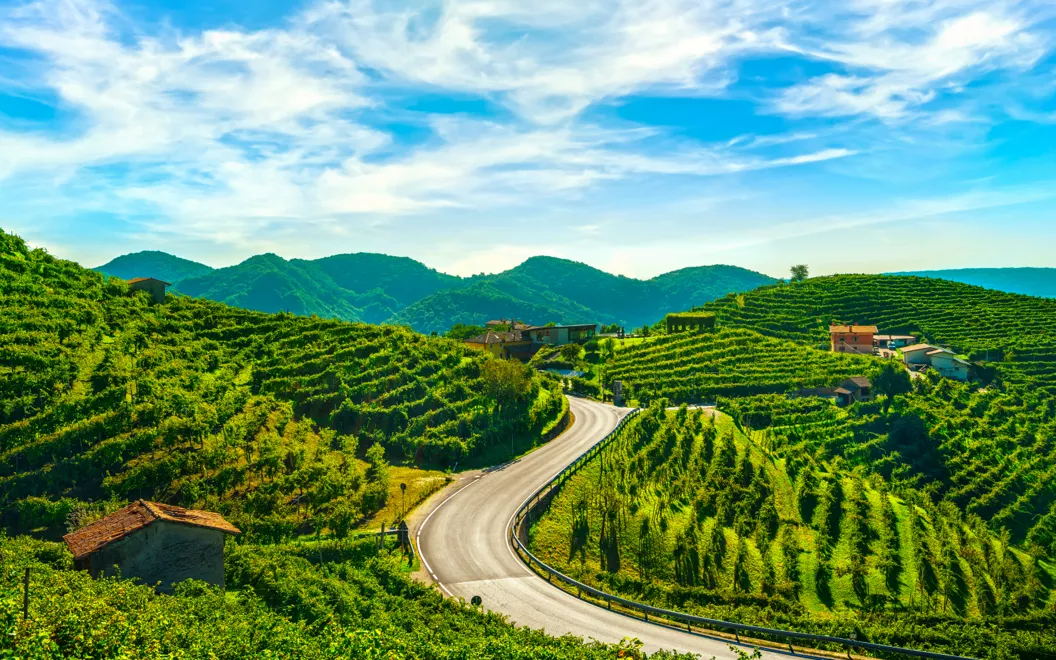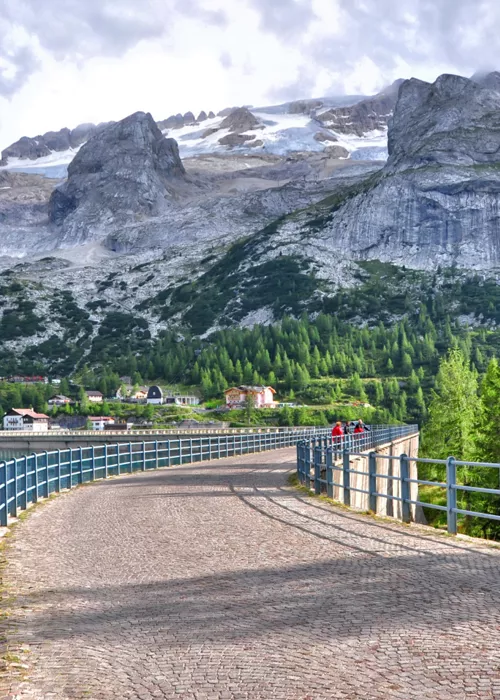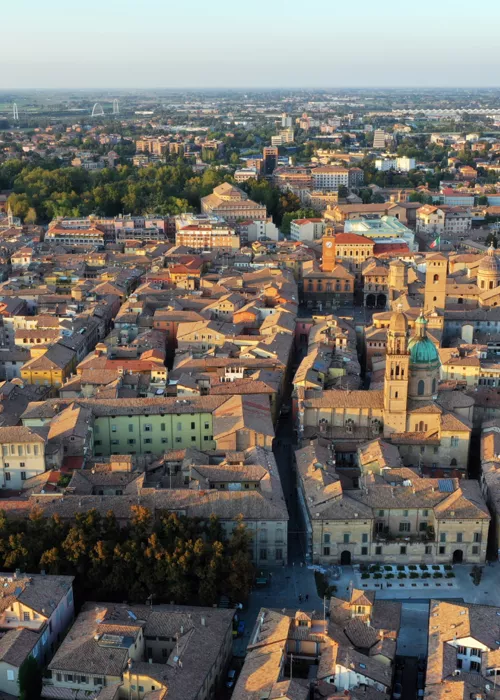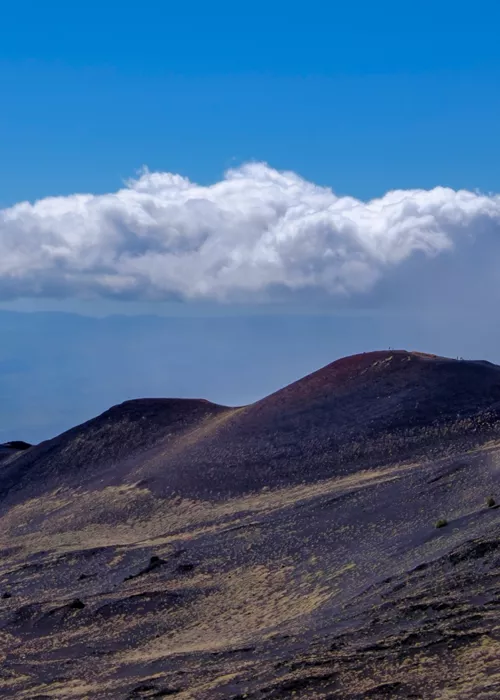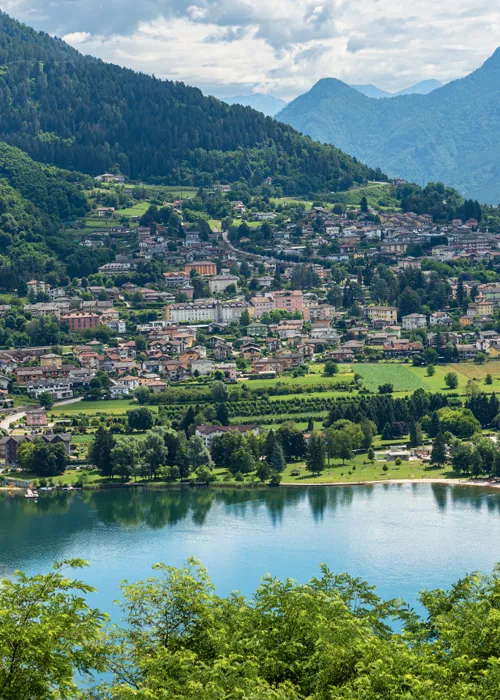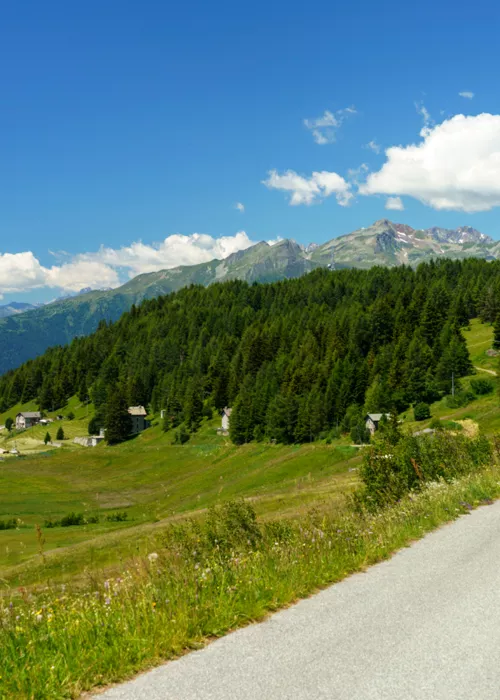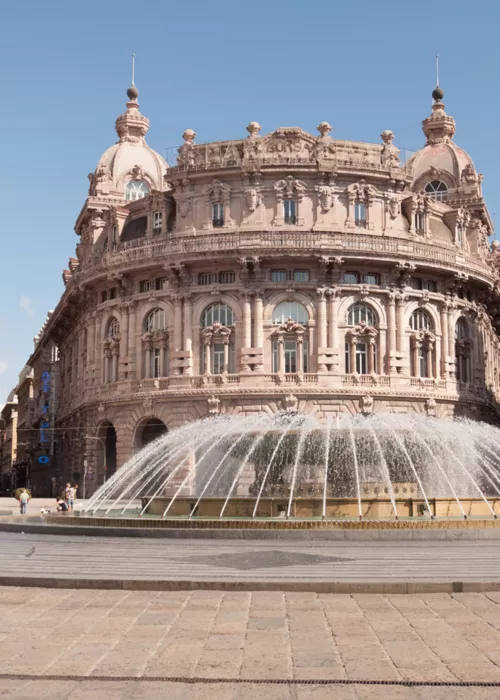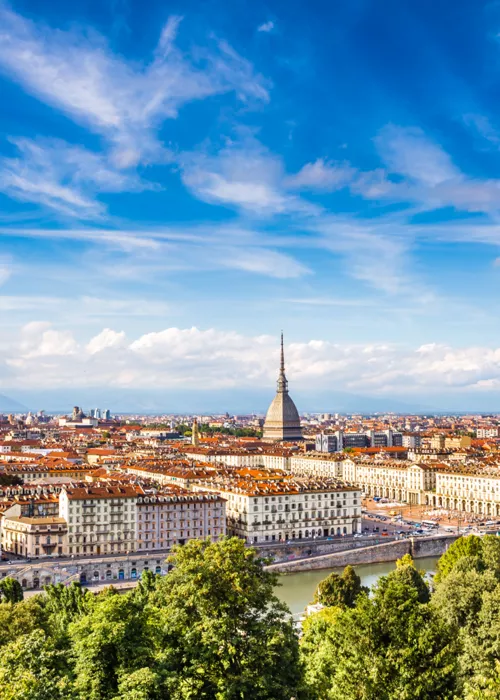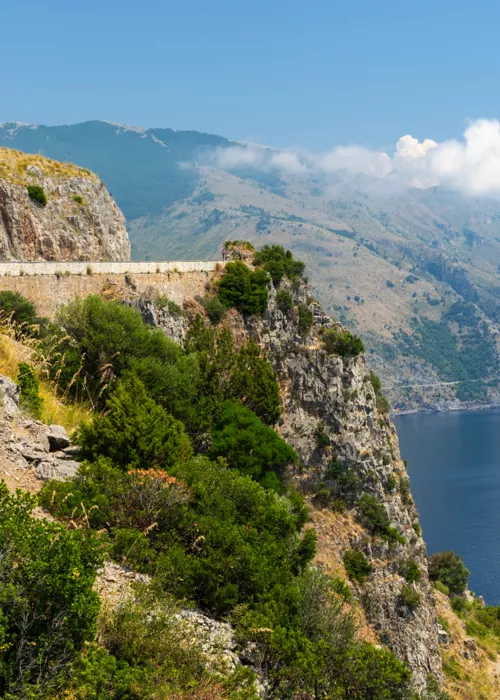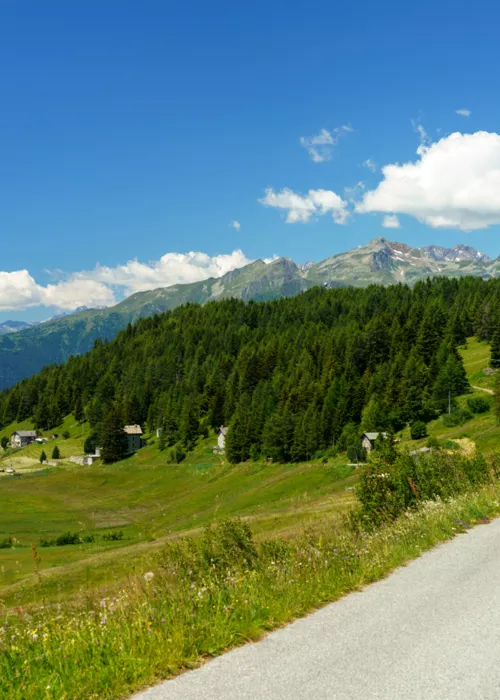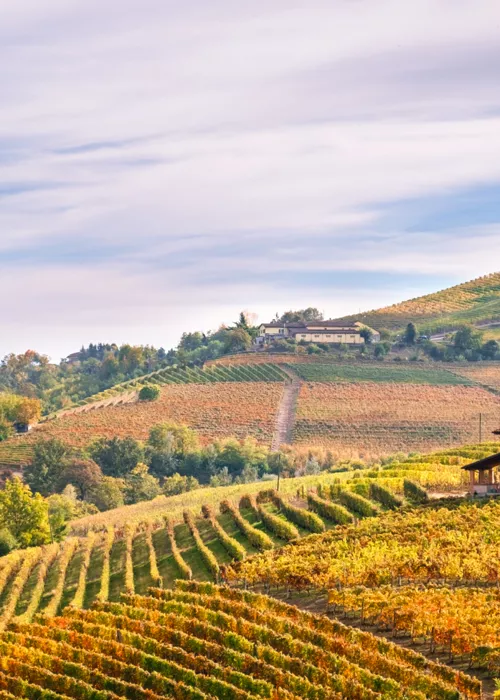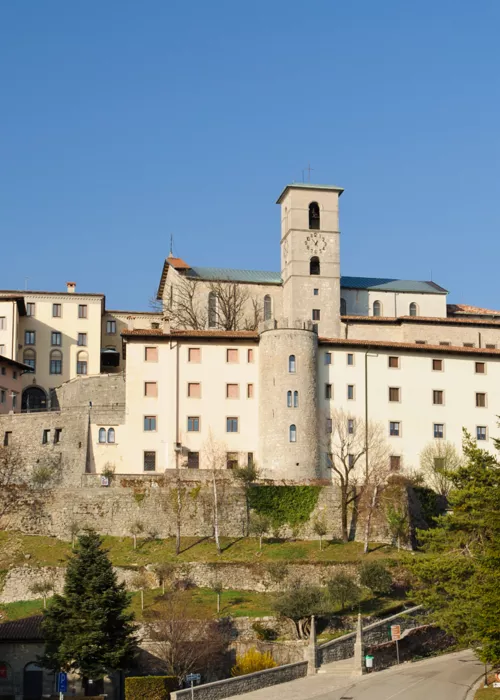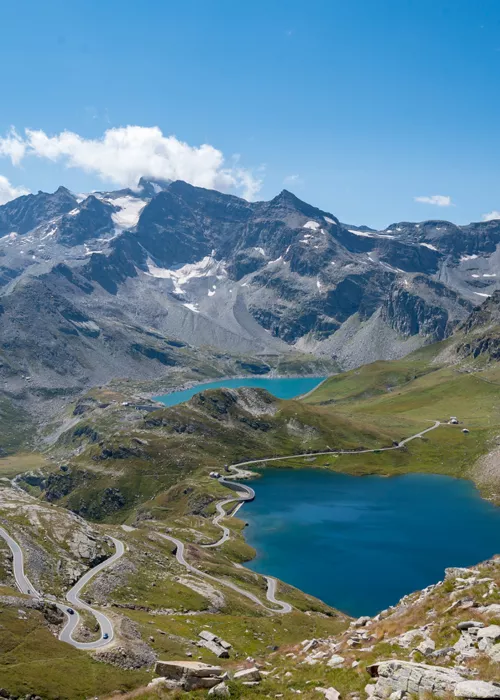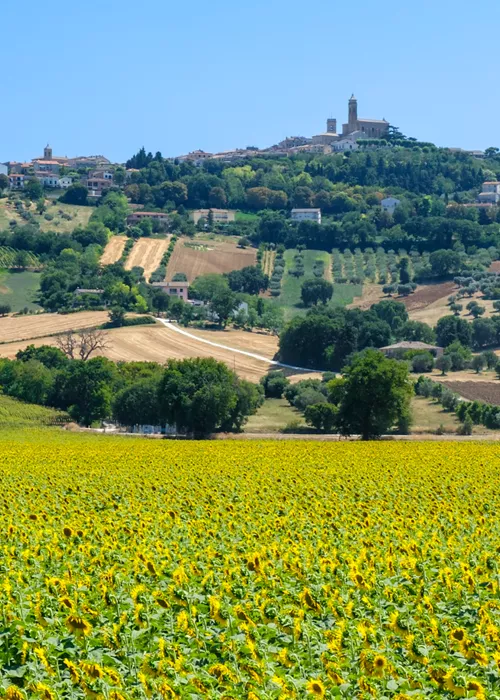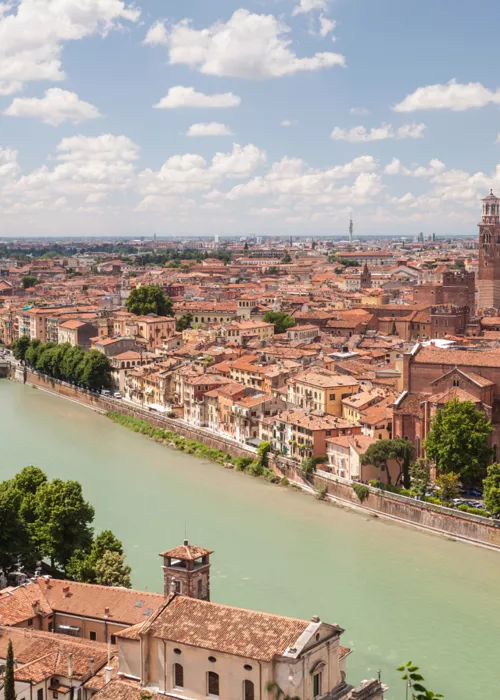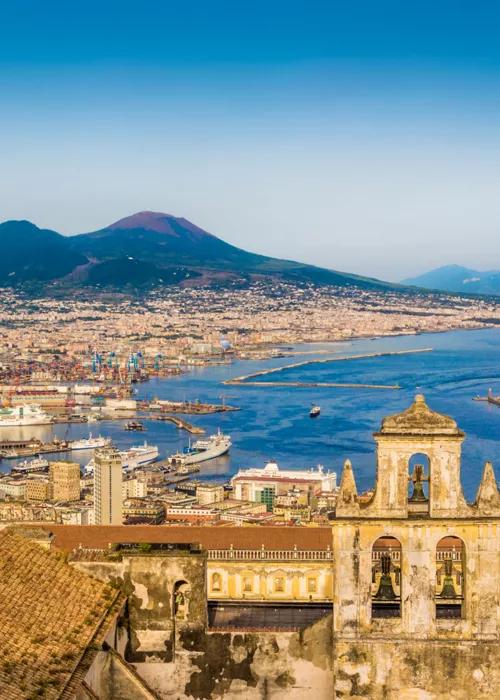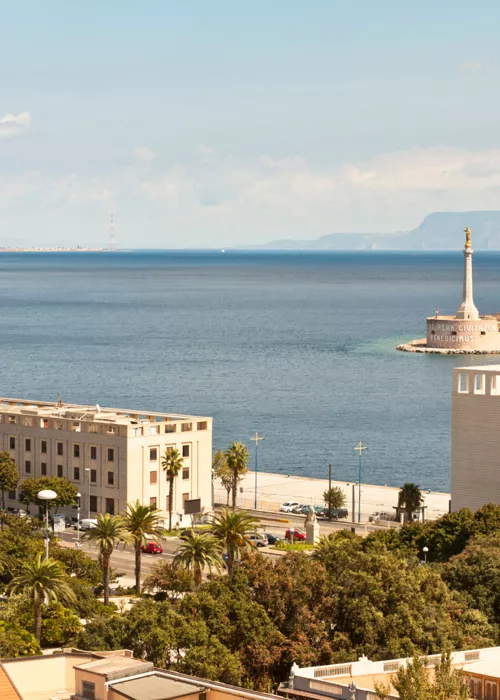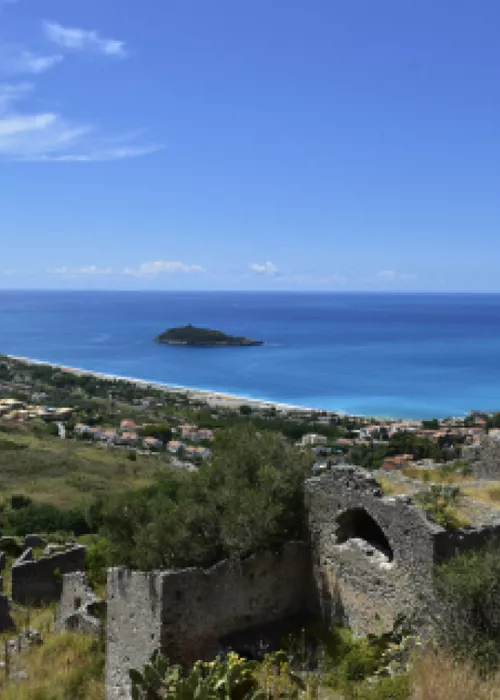In an enchanted forest

With such a start from Borgo Valsugana, arriving at your destination a day in advance is imperative. The advice is to stroll through the streets of the historic centre shaped by the river Brenta and perhaps visit Castel Telvana, the imposing manor house that has dominated the valley since the 12th century. But there is another must. A short distance from the village is Arte Sella, a park with over 40 land art works, artistic installations made with natural materials such as pieces of wood, roots, leaves and clay. The most representative example? The Plant Cathedral – interweaving branches forming grandiose naves and recalling a Gothic-style religious building. Having had your fill of wonder, you can get on the saddle. After a few kilometres you will enter Veneto, along the only rough stretch of this itinerary: a serpentine road that climbs from Valbrenta to the Belluno area, climbing a hill dominated by the Scale di Primolano, two barricade forts that were finished being built around 1910. But passing through Feltre also deserves a stop. Surrounded by high city walls dating back to the 15th century, this town has two symbolic places: Piazza Maggiore, the heart of the ancient citadel, and the Teatro della Sena (i.e., the Theatre of the Scene) known as ‘La piccola Fenice’ (the little Fenice), because it was designed and decorated by the same artists as the Teatro La Fenice in Venice.
Where the bubbles come from

Within a few kilometres, you will find yourself immersed in 50 shades of green. You are in the Prosecco Hills of Conegliano and Valdobbiadene, a Unesco World Heritage Site. The excellence here is not only contained in the bottles of wine, but also in the mosaic-like landscape, designed by the layout of the vineyards on the ciglioni – narrow grassy terraces – side by side with forests, small woods and hedges. In the wind, the rows of vines sway and seem to greet your passage. To respond to this kind salute, stop at one of the many wine cellars, where you will find the product of an agriculture governed by ancient rules. If you want to observe this marvel from above, stop at Farra di Soligo and visit the church of San Vigilio atop Col San Martino. There you can behold the whole valley as far as beyond the Piave River. An alternative? A stop at the San Salvatore di Susegana castle. From this manor house, dating back to the second half of the 13th century, the view extends over the entire Veneto plain.
Treviso, a fancy city

Now comes the time to tackle the only climb of the route: the Ca’ del Poggio ‘muro’, a 1150m ramp at 12 per cent averagely. From this point on, the route continues along straight and rather wide roads all the way to Treviso. Are you sorry the route is over? Fair enough. But there is an elegant and exquisite city waiting for you. After all, everything here is special. Starting with the ancient walls, designed in the 1500s to protect the city from attack by Venice, and the embracing waters of the Sile and its canals with their frescoed palazzi. The heart of Treviso is Piazza dei Signori, the classic Italian piazza-salon, with the Palazzo dei Trecento, where the municipal assemblies (attended by 300 members) met, and the Palazzo del Podestà with a 48-metre-high Civic Tower. A stone’s throw away is the Cathedral of St Peter the Apostle, built on the foundations of an early Christian temple, traces of which remain in Via delle Canoniche. Its appearance is reminiscent of ancient Greek and Roman temples. But don’t enjoy it just from the outside; inside are frescoes by Titian and Pordenone.

